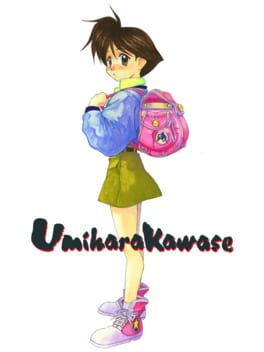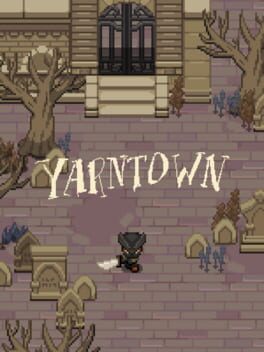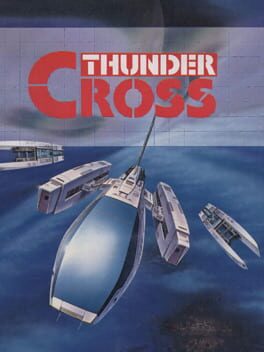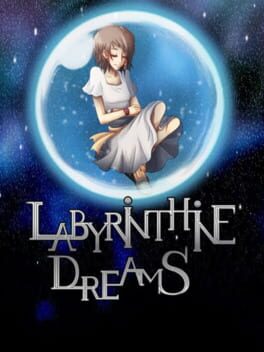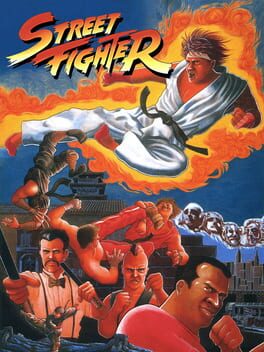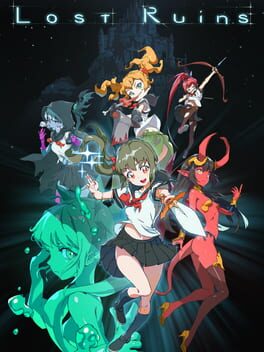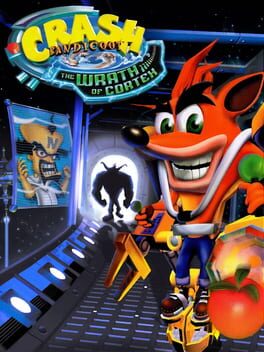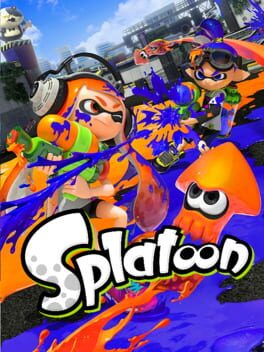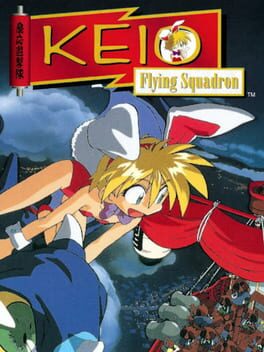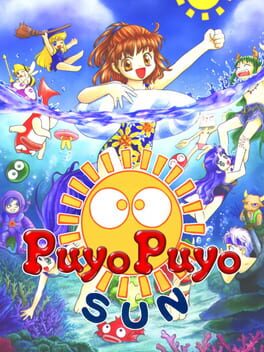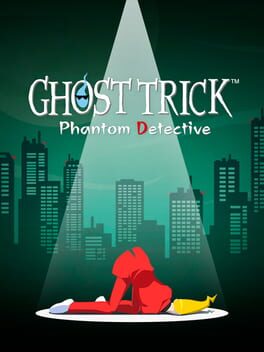RankNegativeOne
1994
Another game I feel unqualified to give a rating to, because I'm just bad at it. I will say that if you have access to the Switch's NSO SNES games, you might want to reconsider buying this, since you can get a version of this game by downloading the SNES switch app with a Japan region account (then open it with the account you have the online subscription with). It lacks some features (any english text, the level select in practice mode), so it might not be a preferred version for you, but it can at least give you an idea of it you'll even enjoy this kind of game.
2020
1988
This is a tough one that I'm not going to bother giving a star rating to, because there are two different versions of this game of vastly different quality because of a few seemingly minor changes. The JP version of the game, and the Western release. Some of the changes are minor, like the first and second stages being swapped, or the epilogue text disappearing too fast in the JP version. Others completely change how the game plays and how fun it is. The JP version has a different weapon system, where you have no super weapon bombs, and your secondary fire instead spreads out your options (to variable degrees; if you have 4 options, they can span the entire screen when you sit in the middle, but they'll leave huge gaps between them). You can also obtain power ups that increase your speed, change your shot type (either changing your bullets to bouncing boomerangs, or changing your options into ammo-limited weapons that function totally differently, like lasers or flamethrowers). All of this is absent in the Western release, where all you have are two additional options (to complement the two options you always have by default in the Western version), and a firepower upgrade. This leaves the Western version of the game simply far less interesting an experience, where you constantly feel like getting hit by stray shots sends you hurtling back to low power, as opposed to the JP version where it felt instead like an opportunity to build up my power ups a different way this time.
Though this difference in quality may also be due to some differences in enemy formations. Namely, the ball enemy that explodes into bullets and one aggressively homing bullet (which I've seen several other reviews mention and complain about on here) does not appear at all in the original JP release. They must have figured Western arcades had longer lines, so they had to wring those arcade-goers of all their quarters way faster or something. I don't know. The JP version also seems to somehow limit the number of times you're allowed to continue with another credit; it simply gave me a game over on my 10th credit, though that might have also been because I was past the 6th level(? Not sure, I don't really care to experiment with it right now).
If you have to play some version of this game, make sure it's the JP version (it's also included in the Arcade Anniversary Collection, along with the Western release), however, it's nowhere close to being the first shmup I'd recommend to someone.
Though this difference in quality may also be due to some differences in enemy formations. Namely, the ball enemy that explodes into bullets and one aggressively homing bullet (which I've seen several other reviews mention and complain about on here) does not appear at all in the original JP release. They must have figured Western arcades had longer lines, so they had to wring those arcade-goers of all their quarters way faster or something. I don't know. The JP version also seems to somehow limit the number of times you're allowed to continue with another credit; it simply gave me a game over on my 10th credit, though that might have also been because I was past the 6th level(? Not sure, I don't really care to experiment with it right now).
If you have to play some version of this game, make sure it's the JP version (it's also included in the Arcade Anniversary Collection, along with the Western release), however, it's nowhere close to being the first shmup I'd recommend to someone.
2023
To me, it's a sign of a really good game in this genre when immediately after finishing, I feel the urge to start another run through. Hi-Fi Rush shows this sign. For a casual "just beat all the levels on normal" playthrough, the rhythm mechanic is cool, and generally not that obtrusive once you adapt to it. In later areas (and, from my limited experience with them, at higher difficulty levels), it becomes an incredibly useful tool for timing your defensive maneuvers, so you feel like some kind of genius with the parry just because you know how to spam it to the beat of the song (though, as it should, this strategy comes with drawbacks). Probably more importantly than all that, it just makes things a lot more fun! Sections that might otherwise feel like they have unremarkable music or very basic navigation become self-imposed playgrounds to hone your rhythm so you've got it down once a fight comes up, and correctly timed inputs actually matter.
Enemy variety could be better, but with the length of the game, it's not that much of a problem. The way enemy groups are mixed together in any given encounter ends up mattering more, and at later levels, they seem to mix up their moves a little bit as well; more enemies might make it more difficult to recognize their weaknesses or attack tells.
The amount of post-game content on offer also feels like such a bonus. I've always got to respect when developers add a sort of roguelite-ish mode based around the vanilla gameplay of their game, so shoutouts to Tango for that one; fantastic idea. It really seems like there's a lot to challenge players who breeze through the Normal difficulty main story, without making players who can't quite get the hang of higher-level play feel like they're missing out.
My biggest complaints feel like they could just be skill issues. Certain attacks feel like they're hard to recognize the tells for. Some enemies that require specific moves to be vulnerable consequently take a long time to kill. I'm sure if I put more time into the game, or specced my character the right way, these issues might just disappear.
All in all, pretty fantastic game. And I hear Tango Gameworks wants to make a sequel! I'm sure it'll be even better. I'm going to post this review and then look up what all those developers are doing now. I hope they all got a raise or something! EDIT: oh no
Enemy variety could be better, but with the length of the game, it's not that much of a problem. The way enemy groups are mixed together in any given encounter ends up mattering more, and at later levels, they seem to mix up their moves a little bit as well; more enemies might make it more difficult to recognize their weaknesses or attack tells.
The amount of post-game content on offer also feels like such a bonus. I've always got to respect when developers add a sort of roguelite-ish mode based around the vanilla gameplay of their game, so shoutouts to Tango for that one; fantastic idea. It really seems like there's a lot to challenge players who breeze through the Normal difficulty main story, without making players who can't quite get the hang of higher-level play feel like they're missing out.
My biggest complaints feel like they could just be skill issues. Certain attacks feel like they're hard to recognize the tells for. Some enemies that require specific moves to be vulnerable consequently take a long time to kill. I'm sure if I put more time into the game, or specced my character the right way, these issues might just disappear.
All in all, pretty fantastic game. And I hear Tango Gameworks wants to make a sequel! I'm sure it'll be even better. I'm going to post this review and then look up what all those developers are doing now. I hope they all got a raise or something! EDIT: oh no
I'd heard for years that this was "the bad one". It's just different from the Castlevanias that preceded or followed it. You can actually see the blueprints of the genre that the series would eventually take on starting with SotN; Simon's Quest has a nonlinear critical path across a map that you're gradually able to access more of as you obtain progression items (although exactly what has opened up to you is rarely very clear, unfortunately). While I didn't really gel with the maze that is trying to "solve" this game, I could absolutely picture someone who owned its original release really resonating with it, mapping out each area and puzzling out where to go.
The cryptic hints are apparently only somewhat less cryptic in the Japanese release, and a proper translation would only help so much; I will grant the game's detractors that much.
The cryptic hints are apparently only somewhat less cryptic in the Japanese release, and a proper translation would only help so much; I will grant the game's detractors that much.
2015
It's okay. If you got it from some bundle you can't even remember, it's a fine enough use of the <1 hour it takes to finish. The art and voice acting is pretty wonky in most places, and the symbolism of the story has the subtlety of a high-viz vest, but it doesn't totally overstay its welcome if you're willing to give it a chance. The puzzles are pretty decent. Varied enough that by the time you've had enough of one type, the game moves on, and each built in such a way that the answer gradually reveals itself, but you still feel smart for solving it.
If it were longer, I would think far worse of it.
If it were longer, I would think far worse of it.
1987
While there's quite a bit of jank that killed me on more than one occasion (clipping through slopes, falling off what seemed like scripted sequences), the general movement makes for a very fun experience. Chaining together midair moves along with the momentum-driven yoyo ride ability feels like a sort of simplistic skateboarding game. There aren't many different types of side objectives, but the level layouts are what make them fun and distinct.
Unfortunately, the points system has some easily-exploited infinite loops, so unless you have the self-control to not use those, there's no fun or challenge to be had in reaching the target score for any given level, only the tedium of executing a long enough combo.
Unfortunately, the points system has some easily-exploited infinite loops, so unless you have the self-control to not use those, there's no fun or challenge to be had in reaching the target score for any given level, only the tedium of executing a long enough combo.
2021
I didn't expect to like this one as much as I did. While it unfortunately suffers from an inverted difficulty curve (where a lack of options and power at the beginning of the game makes the first few hours far more difficult than all that follow, even in repeat playthroughs), once it opens up, it feels empowering to find a new weapon or spell or accessory that suddenly makes some other set of tools viable.
It does feel like some of the systems of the game go underutilized. There's a whole system where liquids like oil, poison, or water can spill on the ground and react with fire or electricity, but aside from certain traps, this whole system doesn't come into play too often. It might be possible to work this to your own advantage if you set up your equipment right.
Altogether, a pleasant surprise. Worth pursuing if it looks like your thing, genre-wise.
A word of warning: a quest given fairly early can be easily failed in the very next room, and several other points throughout. Completing it is actually required in order to get the "good ending".
It does feel like some of the systems of the game go underutilized. There's a whole system where liquids like oil, poison, or water can spill on the ground and react with fire or electricity, but aside from certain traps, this whole system doesn't come into play too often. It might be possible to work this to your own advantage if you set up your equipment right.
Altogether, a pleasant surprise. Worth pursuing if it looks like your thing, genre-wise.
A word of warning: a quest given fairly early can be easily failed in the very next room, and several other points throughout. Completing it is actually required in order to get the "good ending".
Would not recommend. What new it brings to the table (compared to the first 3 games by Naughty Dog) are some additional stage gimmicks that immediately feel like they overstay their welcome, and made me dread each subsequent time they came up. Certain collision geometry seems broken or poorly represented, such that sometimes a jump will bonk against what you thought was a smoothly curved roof that turned out to have an abrupt edge that halts your horizontal movement. The whole game is very ugly, like they didn't know how to make use of the new hardware (or more likely, how to develop for all 3 new platforms at once), and at times this can affect gameplay, with dully lit enemies blending into a dully lit environment.
I think my feelings on this game are encapsulated well by the fact that halfway through, I genuinely thought it might have killed my interest in gaming altogether.
I think my feelings on this game are encapsulated well by the fact that halfway through, I genuinely thought it might have killed my interest in gaming altogether.
The coin theme does very little for me, but honestly, there's some pretty creative level gimmicks scattered throughout the game. However, even if you seek out 100% completion (short of every "you've obtained [x] coins!" milestone message, which is just tedious), there's not a ton here in terms of real challenge or engagement.
2015
1993
It's fine. Not great. Not really the first shmup I'd recommend, or even maybe one of the first 30. There's a certain charm to it, but it's brought down by unchallenging and repetitive enemy patterns, significant slowdown and sprite flickering (though that may be an issue with my setup), and unclear visuals that can lead to deaths that feel unfair.
1997
I'm not actually crazy about the Sun mechanic, since it seems to more heavily incentivize defensive play (quickly popping single chains adjacent to sun puyo, or in order to offset to trigger a sun puyo) as opposed to long chains. However, that still feels like more decisions to make than Fever (a mode which I once took umbrage with, but have since made my peace with), and it also never takes you to an entirely different board like Fever, so I can't fault it too much; it just requires a shift in thinking compared to PP2, more than you might assume at first.
Fantastic game, highly recommended. This version has some visual shortcomings (layering issues, more obvious model mirroring than the original), and the "bonus puzzles" aren't very good (one would hope they'd be additional Ghost Trick levels, instead of unrelated slide puzzles - but at least I got really good at slide puzzles), but it's still Ghost Trick, and the arranged soundtrack and new controls function well enough.
